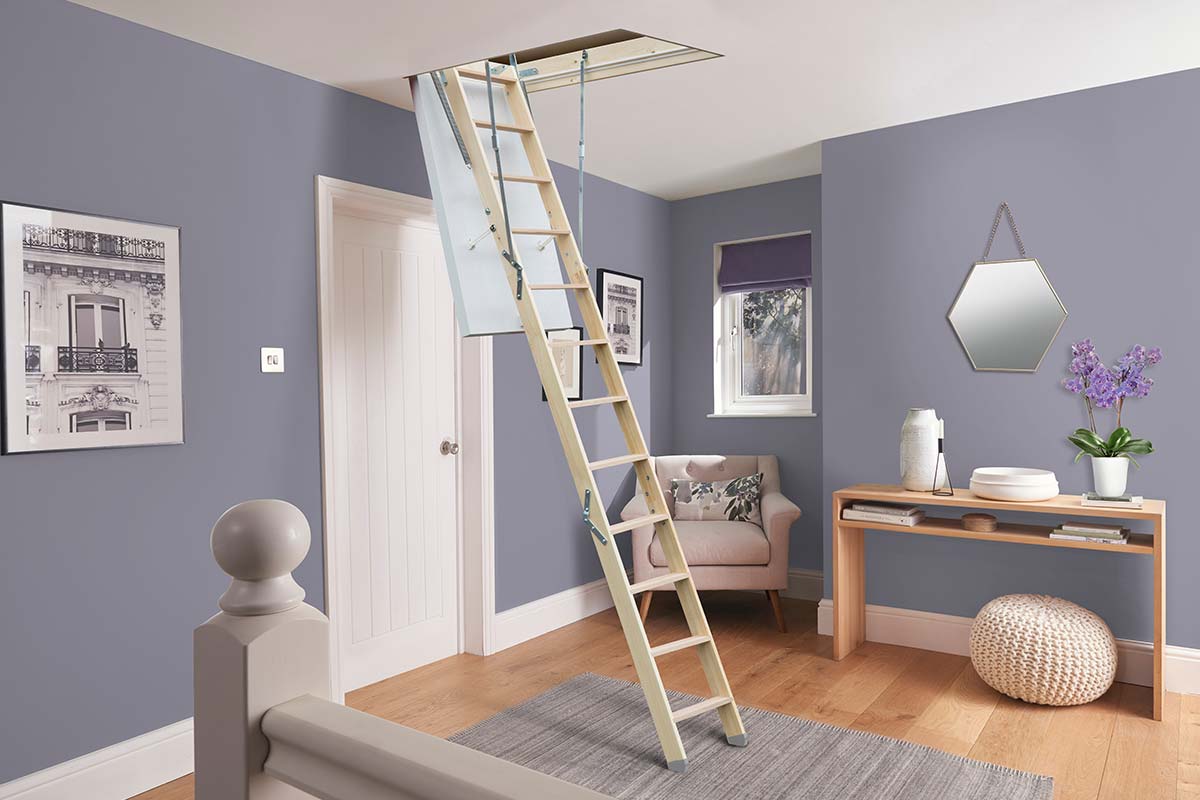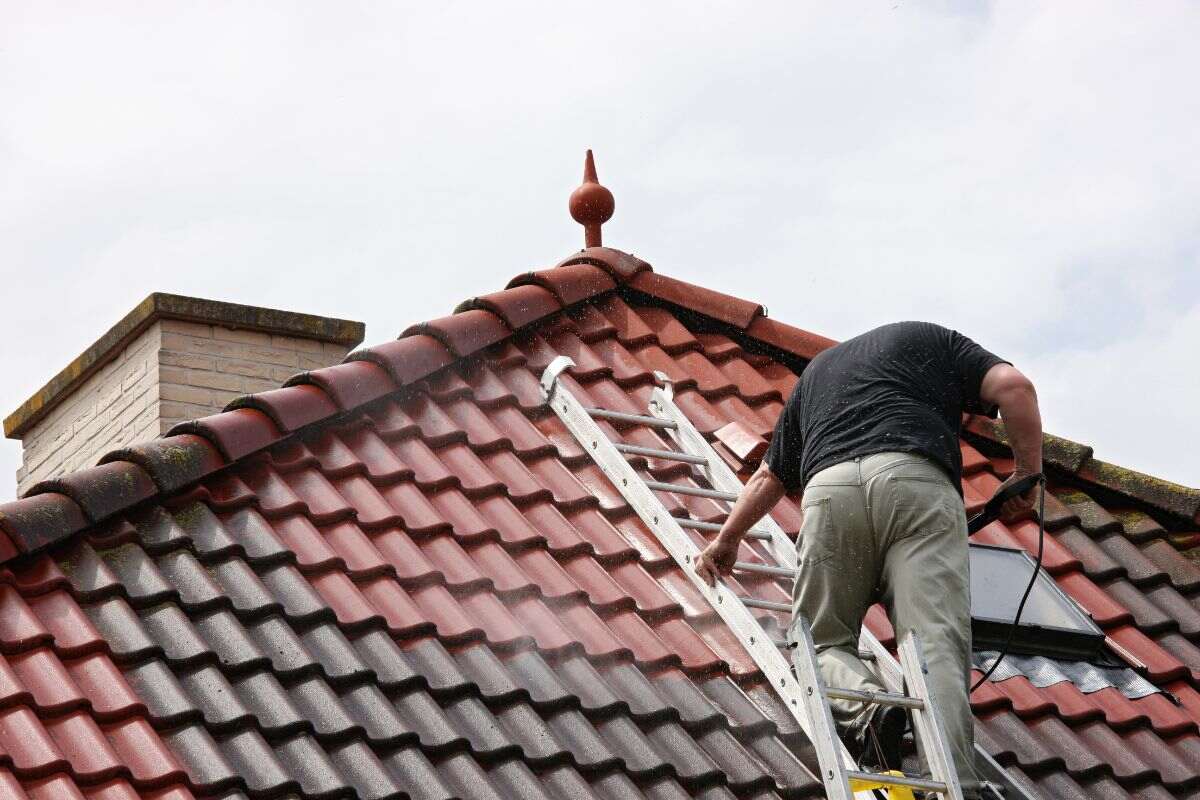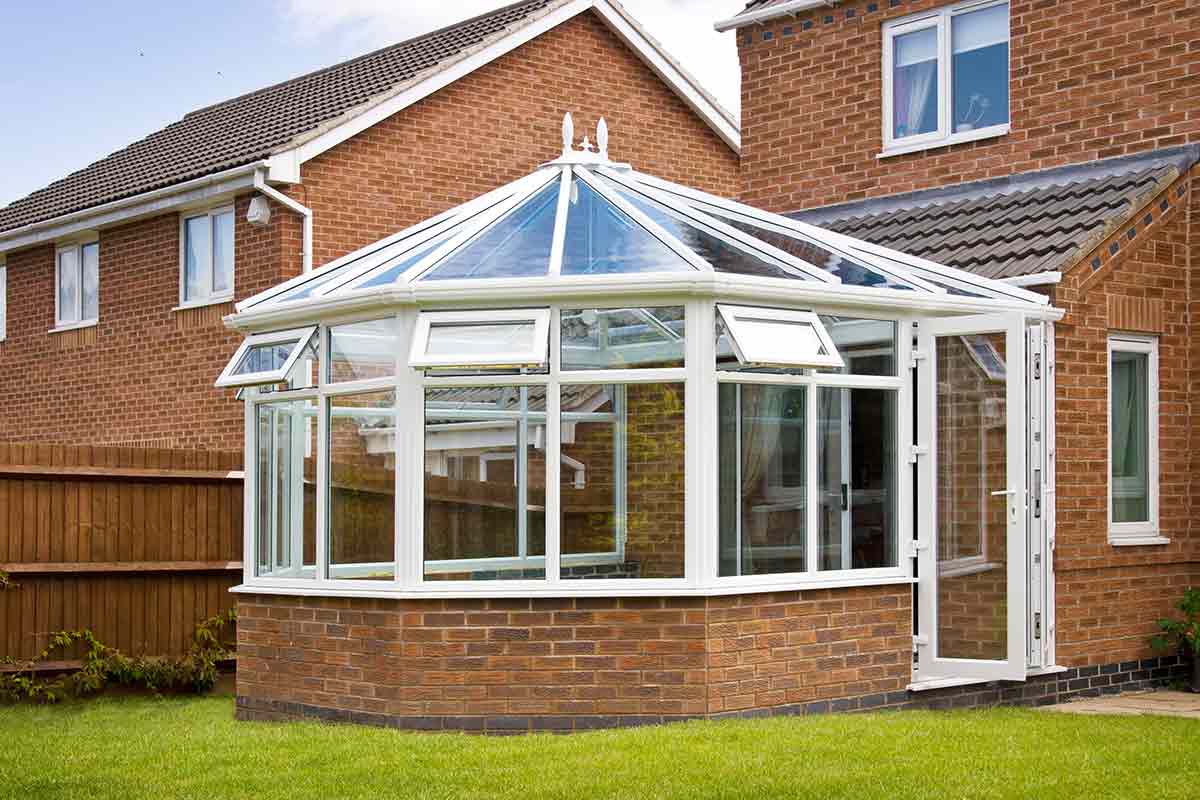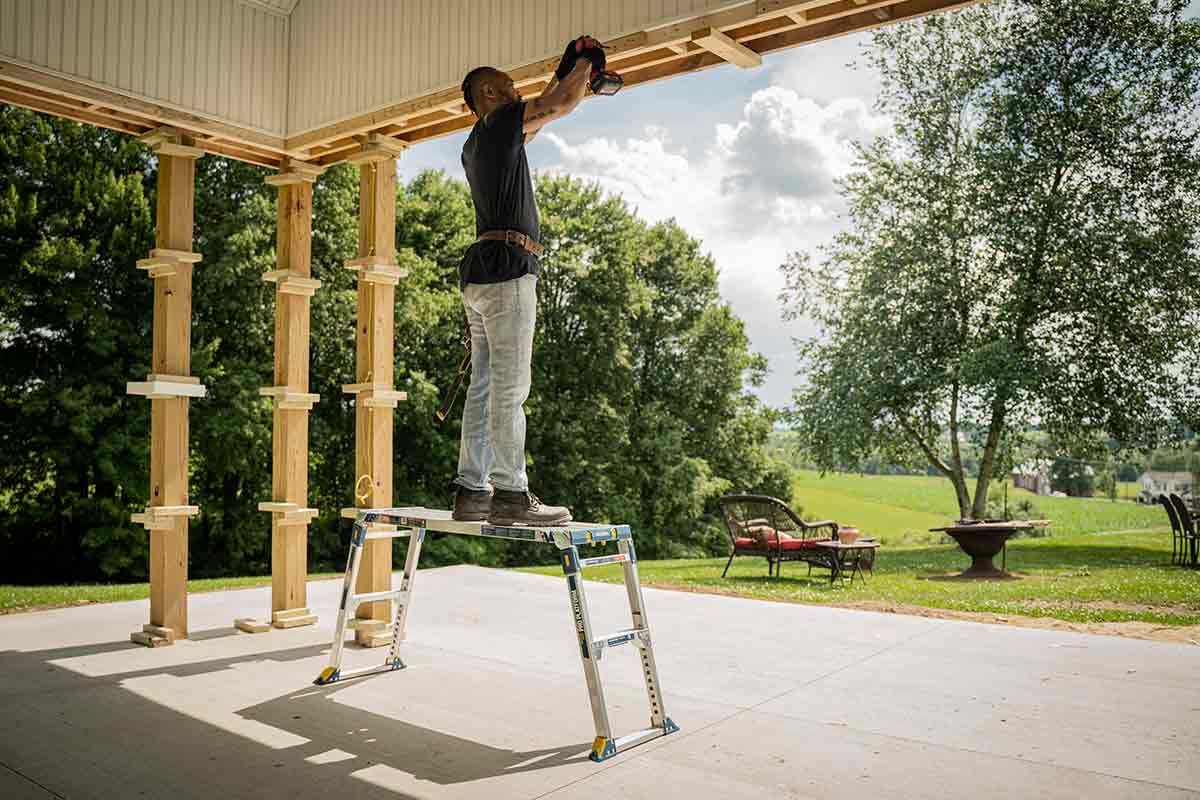When to Use a Roof Ladder & How to Choose the Right One for Every Job
June 23, 2025 | Nate Cord
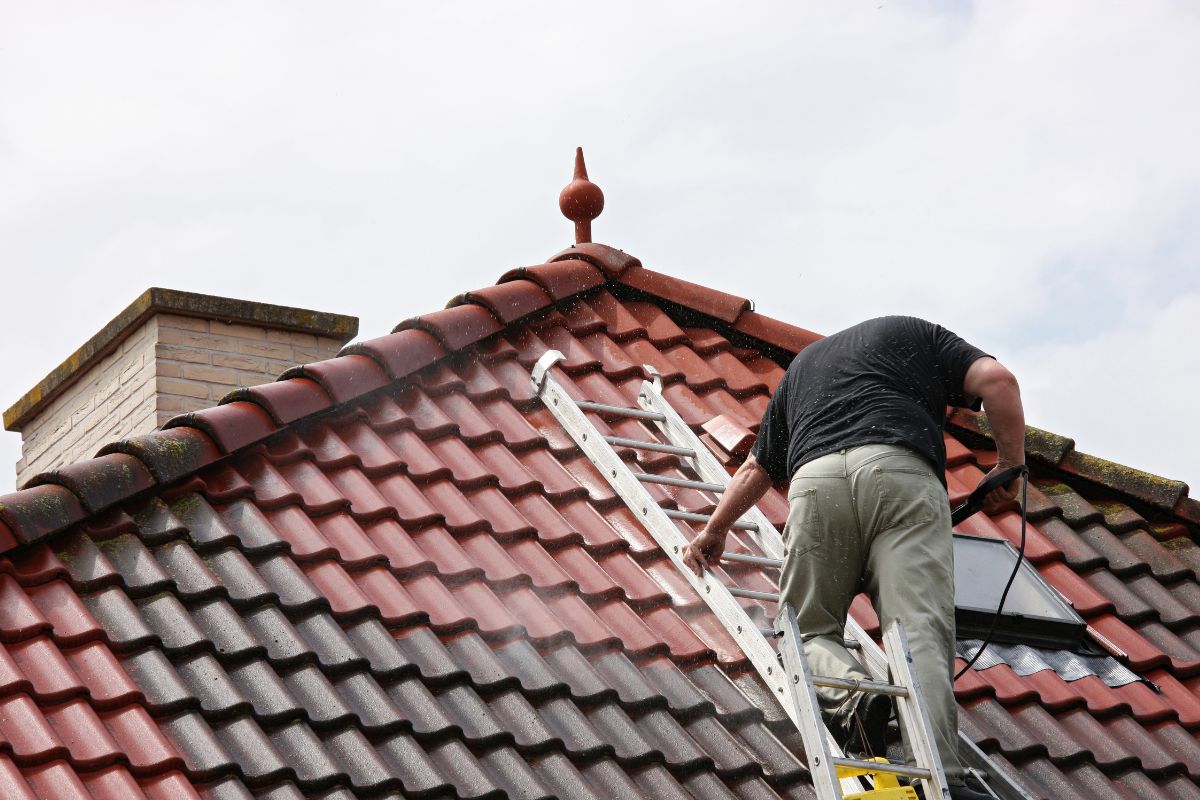
A roof ladder (sometimes called a ridge ladder) is a purpose-built ladder designed solely for working on sloped rooftops. It has heavy-duty hooks that anchor over the roof ridge and a flat, walkable surface to distribute weight.
In this guide, we explain when you need a roof ladder, how it differs from an extension ladder, and how to choose the right type and size for your specific job.
Roof Ladder vs. Extension Ladder
While both can help you access a roof, roof and extension ladders serve very different purposes.
A roof ladder is equipped with large hooks and wheels; it hooks over the ridge of a pitched roof and stays firmly in place, meaning it never touches the ground. This enables safe roof-ridge access and traversal on steep or slippery pitches (25°-65°), distributing weight across multiple hooked points, avoiding roof penetration, and protecting tiles or slats from damage.
An extension ladder, on the other hand, is a ground-supported ladder that leans against a building. It is used to reach elevated areas, not to walk on the roof slope. This means it is for vertical access to safely ascend to a working height (such as guttering or eaves).
Using a roof ladder in place of an extension ladder—or vice versa—can lead to safety hazards. These tools are not interchangeable: each is essential for its specific phase of roof‑based work.
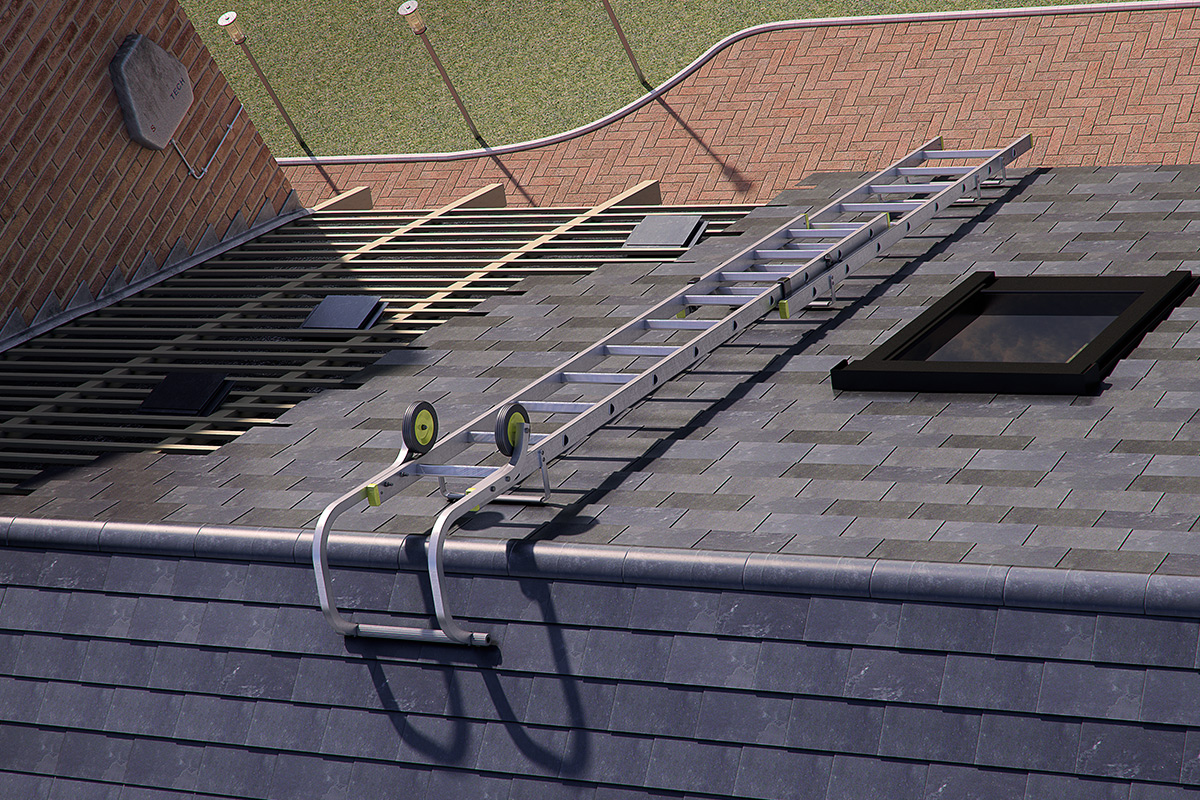
How to Choose the Right Size Roof Ladder
Roof ladders have reinforced stiles and large hooks that grip over the roof ridge or eaves, allowing you to work safely along the slope without crushing tiles or slats. Their wide, non‑slip rungs and integrated stabiliser bars also help to maintain your balance on pitched surfaces.
Here’s what else you need to consider:
1. Measure Ridge Span
Unlike extension ladders, roof ladders are sized to span the roof ridge. Measure the length of the roof section you’ll work on—from ridge to ridge—and choose a ladder that covers it, while leaving a few extra rungs overhanging for safe movement.
If a roof ladder is too long, it will hang over the roof edge and become unsafe. If it is too short, it won’t be able to hook onto the roof ridge, forcing unsafe movement on the roof surface.
2. Choose Single or Double-Section
When it comes to roof ladders, you can choose between two main types: single-section or double-section.
- Single‑section roof ladders are a fixed length, making them suitable for shorter roof spans. When using a single-section roof ladder, position the hooked end over your roof’s edge and climb while keeping your weight centred for balance.
- Double-section (extendable) roof ladders are made up of two sections that extend for further reach, perfect for ridge and chimney repairs. To use, extend the ladder to the desired length and hook it over the ridge.
For longer jobs or carrying loads, opt for a guard‑railed platform or scaffold tower. If you need an elevated platform, consider a MEWP.
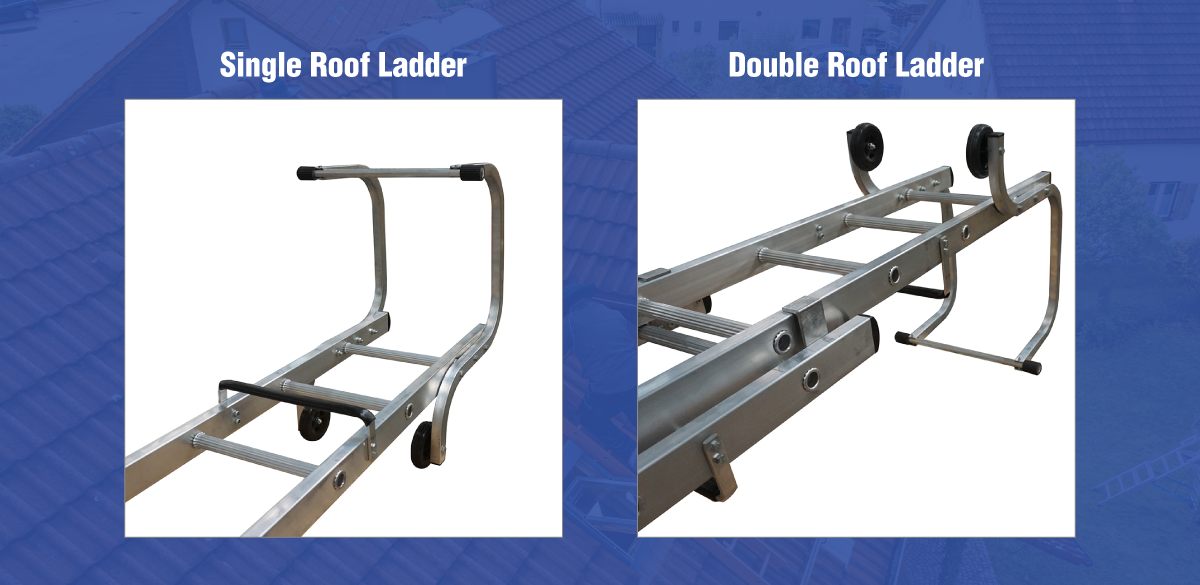
3. Consider Pitch Angle
Not all roof ladders are suitable for all types of roofs.
The British Standard specifies that portable roof ladders are designed to provide temporary access to pitched roofs with angles between 25° and 65° for short-duration, low-risk tasks.
You should avoid using them on mono-pitch, low-pitch, or profiled roof coverings.
4. Check Load and Safety Standards
All new ladders sold in the UK must conform to the BS EN 131 standard. Roof‑specific ladders often reference the older BS 2037 until they’re withdrawn (unavailable to purchase new). The new EN131 regulation aligns ladder classifications across Europe in a simple, two-class system:
- EN131 Professional: For industrial, trade & business use.
- EN131 Non-Professional: For infrequent home/DIY use.
Regardless of professional or non-professional use, all EN131-certified ladders must support a minimum load rating of 150 kg — this includes the user, tools, equipment, and materials.
It’s your job to make sure your ladder can handle the load. All EN131 ladders must support at least 150kg (user + tools/materials), but you should never guess your load. Builders or tradespeople may need ladders rated for 180kg+, especially when carrying materials like tiles or equipment.
A roof must also be able to support the weight of a ladder and the user. Lightweight roofing systems, such as those made with sheets (polycarbonate), may not be strong enough. If you are unsure, consult with a roofing professional for guidance.
5. Inspection & Maintenance
All work at height jobs should be risk assessed to ensure safe ladder use.
The UK’s Health and Safety Executive (HSE) mandates that, before working at height, you must work through these simple steps.
- Avoid working at height if possible.
- Where unavoidable, use safe equipment and minimise fall risk.
- Use proper access, fall prevention, and emergency planning.
To ensure compliance with these regulations, the HSE recommends the following measures.
- Carry out as much work as possible from the ground.
- Ensure ladders are regularly inspected and well-maintained.
- Avoid overreaching and overloading.
- Use fall protection around fragile surfaces.
- Consider rescue and evacuation procedures.
Employers and those in control of any work-at-height activity must make sure that the work is properly planned, supervised and carried out by competent people. This includes using the right type of equipment for working at height.
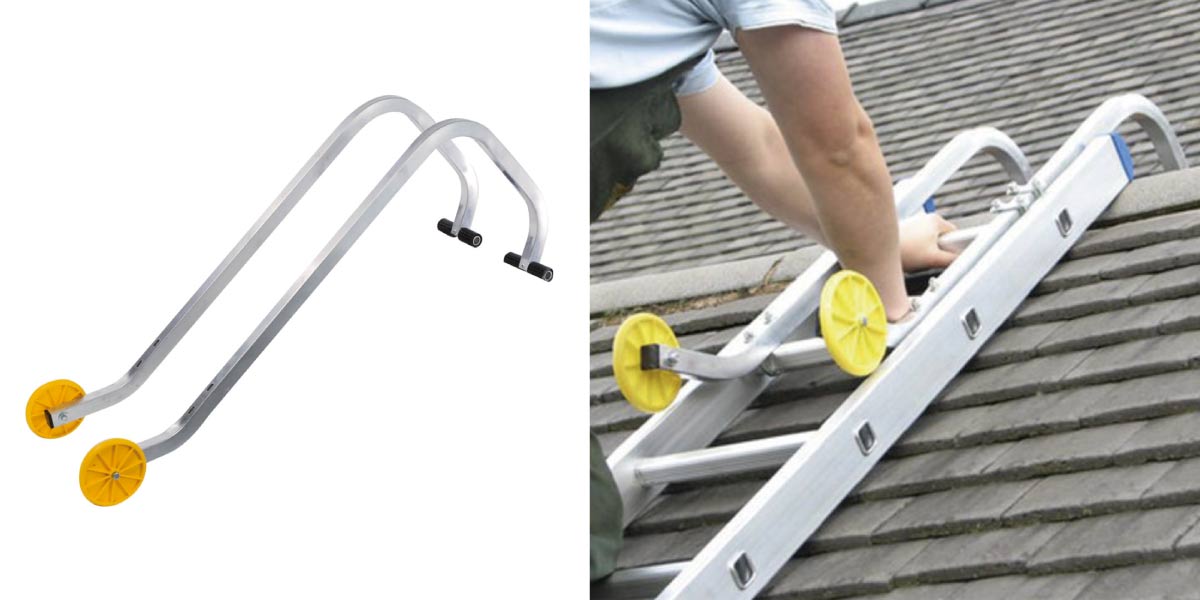
What Roof Ladder To Use for Specific Jobs
Most ladder accidents happen due to using the wrong equipment for the job. Don’t use a general-purpose ladder for specialist roofing tasks, and instead consider a roof-specific ladder for the job at hand.
1. Chimney Repairs
Use a double-section extendable ladder with a minimum 6-metre reach to comfortably span from eaves to chimney stack. Prioritise models with steel cross-bracing between stiles to prevent dangerous lateral flex when handling heavy materials at height.
For professional use, select EN131 Professional-rated ladders with 180 kg+ load capacity to accommodate your weight plus tools and materials.
2. Solar Panel & Satellite Work
Use aluminium models with padded rollers to protect panel surfaces. When working near overhead cables, opt for fibreglass ladders to reduce electrocution risk.
For typical residential roofs, a 3-4.5 metre span provides optimal coverage without excessive weight. The ideal weight is under 15kg for easy lifting onto roofs while carrying equipment.
3. Tile & Slate Replacements
Choose single-section ladders with integrated tile guards (rubberised contact points). These distribute weight evenly and reduce the risk of tile damage. For Victorian slate or clay roofs, opt for felt-lined hooks to prevent scratches.
4. Roof Inspections & Light Maintenance
Use a lightweight, sub-3.5-metre ladder under 15kg.
Prioritise quick-lock hooks that engage ridges in seconds without manual adjustments. Other integrated features, such as tool trays (for moisture meters or cameras) and non-slip standing platforms, improve efficiency during extended assessments.
For slate roof inspections, choose narrow-profile designs (under 300mm wide) to fit between delicate battens.
Can I Use a Roof Ladder to Reach the Gutter?
No, roof ladders ride the ridge and should not be used to reach the gutter. Proper eaves maintenance requires working parallel to gutters while maintaining three-point contact. To reach eaves or gutters, use a correctly sized extension ladder (+ 1 m overhang).
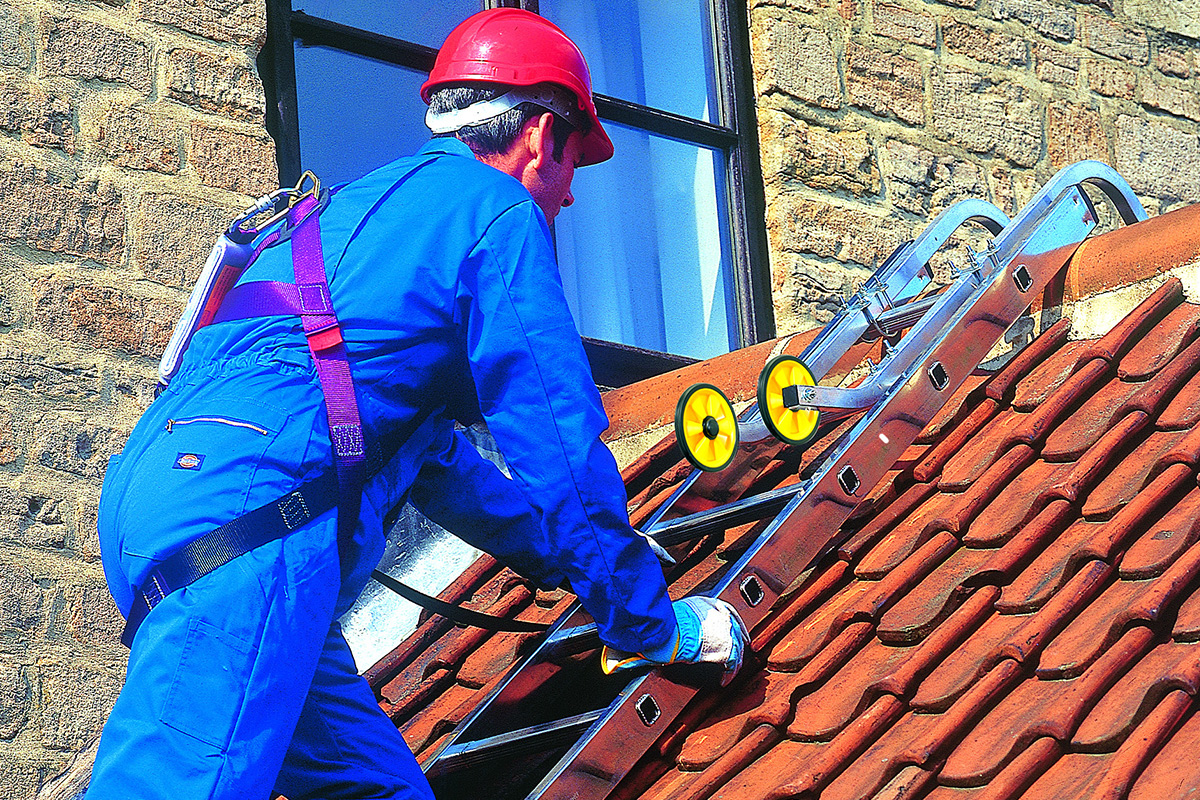
Roof Ladder FAQs
How Do I Access a Roof Ladder?
Use a tied-off extension ladder (to EN 131) to reach the ridge. Take the roof ladder up and slide it long-side onto the ridge so the hooks clip securely over the peak.
What Capacity Should My Roof Ladder Have?
All ladders in the UK must meet BS EN 131, which requires a minimum load rating of 150 kg (this covers the user plus tools and materials)
What Ladder Material Is Best For Roof Work?
Aluminium ladders are lightweight and corrosion‑resistant, which makes them ideal for general roof jobs. However, if you’re working near electrical hazards, you should use a non-conductive fibreglass ladder.
If you require additional information or have a question for our team on ladders, don’t hesitate to get in contact using this form or via phone at 01639 849847.
Are you looking for a reliable roof ladder or other premium access equipment? At Ladders4Sale, we offer a range of ladders, platforms, steps, towers, and accessories for all trade and do-it-yourself jobs at unbeatable low prices. Better yet, all of our products come with lifetime support—after your initial purchase, we continue to provide ongoing support and assistance for free. In addition, all orders come with free shipping to mainland UK.
Be the first to know the latest industry news and offers
